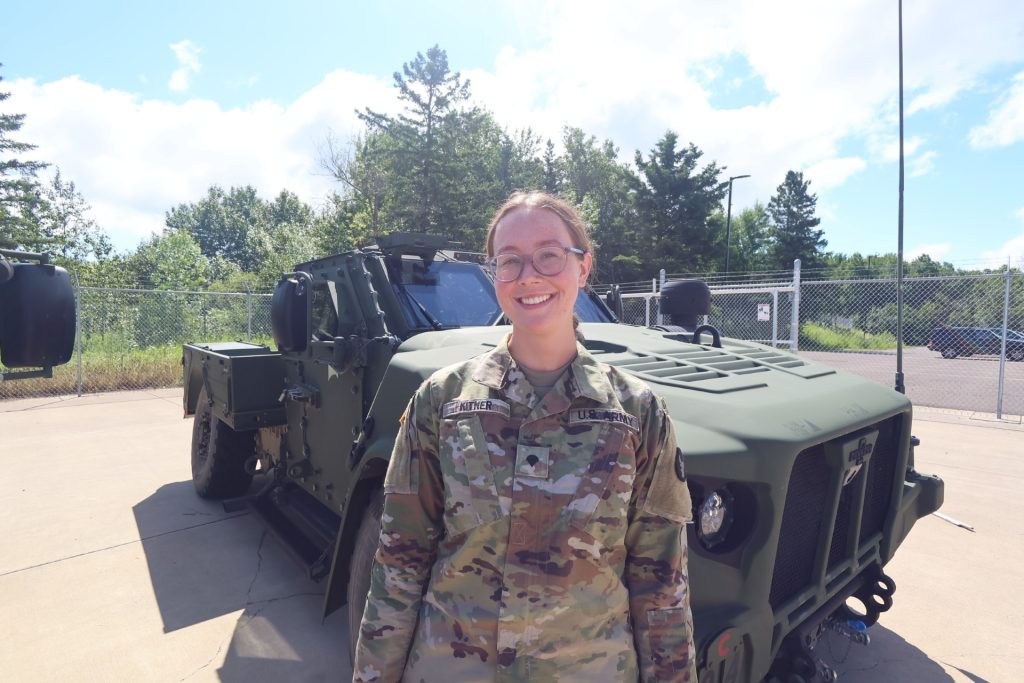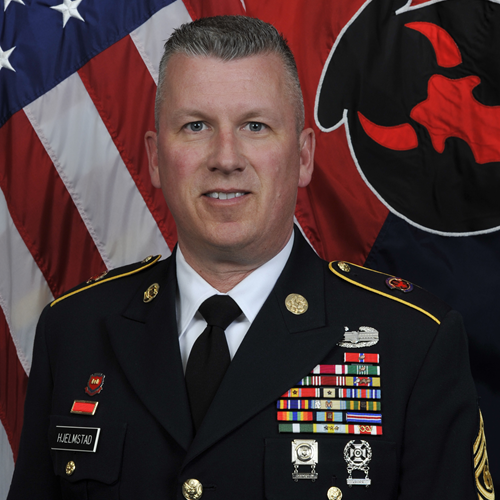Future Faces of the Force: Out of the Past Emerges a Cyber Warrior
At 43 years old, with a wife and three kids, Army Chief Warrant Officer 2 Patrick Kooiker returned to the Minnesota National Guard in 2021 after nearly a decade away from the military.
“The first time I joined the military I did it because all my friends were doing it,” said Kooiker, a network operation warrant officer. “This time, I joined for the benefits, especially TRICARE for life and the Post 9/11 GI Bill, but mostly TRICARE for my kids.”
Kooiker, a Bayport, Minn. resident, first served from 1995 to 2010. He spent two years with the Army Reserves and 13 years with the Minnesota Air National Guard’s Saint Paul-based 133rd Airlift Wing. He also served a one-year active-duty rotation with the National Guard Bureau.
“I was a key player in the restructuring of the mission for the Fargo, North Dakota, unit to transition from an F-16 unit to a drone unit,” said Kooiker. “I also played a role in moving the B2 aircraft to Andersen Air Force Base.”
After reaching the rank of master sergeant, Kooiker transferred to the Individual Ready Reserve. There, he conducted contracting operations in Afghanistan and Kyrgyzstan before leaving the military in 2015.
A pivotal moment came when mentors, Army Col. Carl Fassbender and the Minnesota National Guard’s Command Chief Warrant Officer, Chief Warrant Officer 5 Erik Homme, recognized the value of Kooiker’s expertise and encouraged him to return to service. But one obstacle held him back from serving. He did not meet the current height and weight requirements.
“I was 90 pounds overweight,” Kooiker said. “I started walking, dieting, daily workouts, and I ran my life as though food was fuel.”
Nothing was going to keep him from achieving his goal to serve again. Once he lost the extra weight, he was one step closer to rejoining.
By 2021, Kooiker saw that dream come true as he enlisted for the second time. This time as a soldier in the Minnesota Army National Guard.
“Patrick was appointed as a warrant officer in 2022 and quickly demonstrated a maturity and depth of knowledge comparable to our senior signal warrant officers,” Homme said. “He had over 15 years of Army Reserve and Air National Guard service prior, and he honed his IT/cyber skills at 3M and Securian during his break in service. These experiences, coupled with his maturity and desire to mentor others, were a perfect fit for the Warrant Officer Corps and the Minnesota National Guard. His passion for the Corps and deep IT/cyber knowledge are keys to our success in this area.”
Not long after enlisting, Kooiker left for a second round of basic training. There, drill sergeants recognized his leadership and knowledge and allowed him to coach and mentor newer service members.
“The drill sergeants trusted me to get things done at the barracks,” Kooiker said. “They would bring us back from dinner chow and I would take charge of the formation and ensure they were in bed by eight and up by four.”
After graduating basic training, Kooiker attended the warrant officer basic course and became qualified as a network operations warrant officer, adding to the Guard’s growing cyber capabilities and network oversight. His role as a warrant officer merges with his civilian career where he works in information technology and electronics engineering.
“I get to do things most will never experience,” said Kooiker. “Running cybersecurity exercises and simulating enemy attacks allows us to refine our equipment, improve our tactics and prepare service members to defend our systems in real world scenarios.”
Kooiker is working to bridge the gap between civilian expertise and military application. His ability to leverage knowledge gained in both sectors allows him to find areas for improvement and share best practices.
“CW2 Kooiker is a role model and champion for any noncommissioned officer considering becoming a warrant officer,” said Homme. “He fully supports our Warrant Officer Candidate program through instruction, mentorship, and event participation. He readily helps others understand the networking that is used and goes out of his way to volunteer to teach classes and attend seminars that benefit other cyber teams at symposiums.”
His commitment to serve extends beyond the drill hall. Kooiker recently coordinated food and supplies for service members assigned to the Guard’s Cyber Protection Team who were responding to cyberattacks in St. Paul.
He also dedicates time to the National Guard Youth Camp, Memorial Day events, the Civil Air Patrol, and, with his wife, coaches their daughter’s special needs baseball team.
Driven by a desire to make a positive impact, Kooiker lives by the Army values. He links the past and the future of the Minnesota National Guard, representing the next generation of cyber warriors.
Though not new to military service, Kooiker is a rising leader, shaping others within the cyber community.
“Do as much as you can, as you never have enough time or money,” Kooiker said. “Start doing what you love now. No one takes better care of your career than you.”
































































































































































































